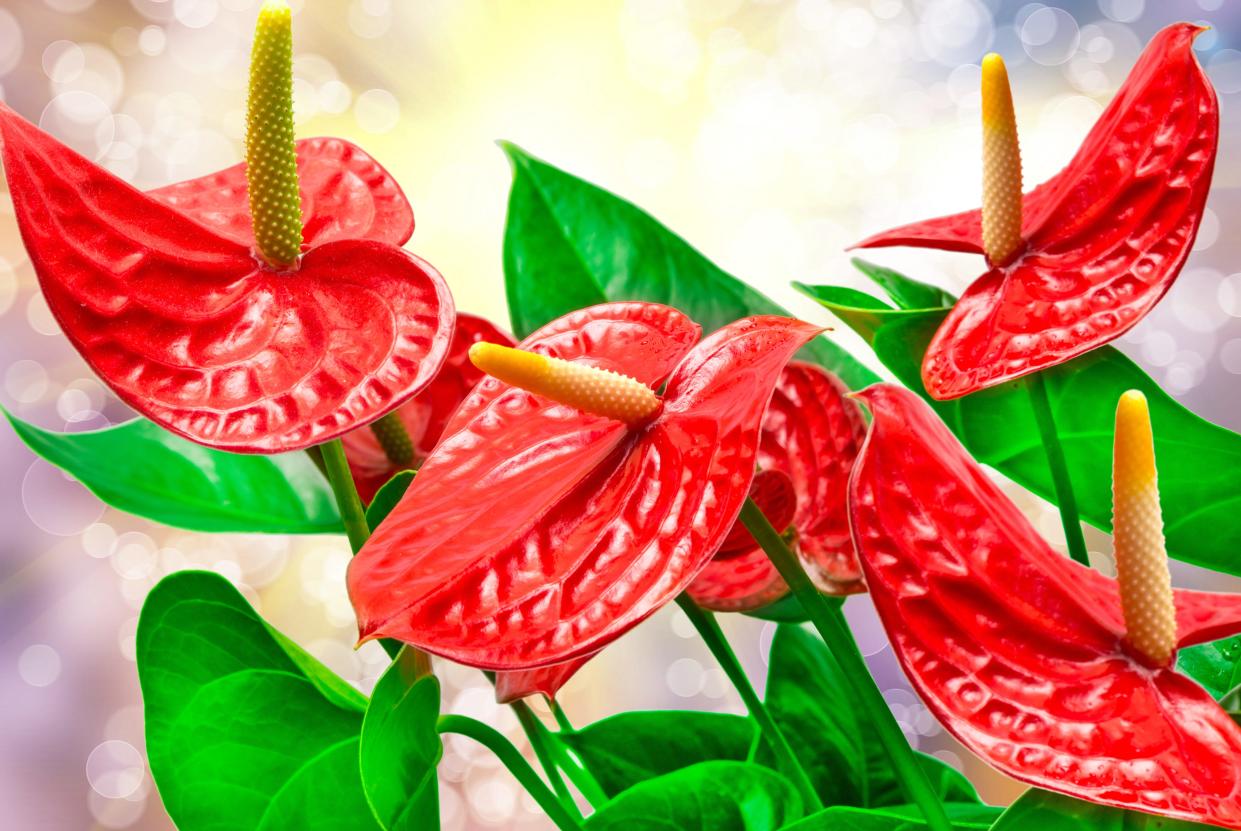CHARLES REYNOLDS: Grow colorful Anthuriums on the rocks

The queen of England has excellent taste. My wife, Jean, an inveterate royal watcher, has noticed that Her Majesty’s desk often features an Anthurium in bloom. Native to Tropical America, the genus Anthurium features about 100 species, though almost all plants sold nowadays are hybrids. These herbaceous beauties are notable for flowers that flaunt a large and colorful spathe and a spike-like spadix that contains innumerable tiny blossoms. Depending on variety, the colors of the spathe and spadix can be the same or contrasting. Those colors can be red, white, pink or yellow. In addition to that flamboyance, the glossy, heart-shaped leaves of many hybrids are deep purple.
Unfortunately, these plants — at home in bright, filtered light and moist, fertile soil — are too chill-sensitive for in-ground landscape use. They can succeed as houseplants if misted frequently, but putting them outdoors when weather permits is always beneficial. My favorite method of cultivating Anthuriums indoors is growing them mounted on a lava rock set in a shallow bowl of water. The plant’s root infiltrate the rock, which absorbs water. Maintenance is easy: Change the water every few days and add liquid fertilizer at one-third the indicated rate three times annually. The sole challenge is finding the right light exposure to keep your plants healthy. Rock-mounted Anthuriums are available online.
SURPRISINGLY DROUGHT-TOLERANT PLANTS
Our summer rains will end in a couple of months, causing some gardeners to worry about how much extra irrigation certain plants may demand during the dry season. Indeed, some plants just look like they need a lot of water — but looks can be deceiving. All ferns, for example, require moist conditions, right? No. Our native sword fern (Nephrolepis exaltata) can tolerate the worst droughts our climate can dish out. And then there are bromeliads like silver vase and coral berry Aechmeas, as well as dozens of Neoregelia hybrids that thrive with a thrice-monthly sprinkle during prolonged dry spells.
An especially drought-proof plant is Crinum asiaticum, also known as tree crinum and giant crinum. This evergreen herbaceous species grows from potentially massive bulbs that store sufficient moisture to keep the plants happy week after rainless week. The foliage of this species, unfortunately, is prone to fungal maladies. When it comes to woody shrubs, our most commonly grown xeric species is Jatropha integerrima, often called peregrina. A red-flowered, nearly ever-blooming shrub up to 8 feet tall, this sun-loving West Indian plant is untroubled by dry weather.
RUSTY STAGGERBUSH LOW KEY BUT CHARMING
Rusty staggerbush is a native shrub that can serve as an attractive, low-maintenance landscape plant. Typically 6 to 9 feet tall in sun, the species (Lyonia ferruginea) is an evergreen plant with arching stems that display white, bell-shaped, fragrant flowers for weeks in spring. Caution: plants can spread vigorously by rhizomes and may be toxic to pets and livestock. Plants are sometimes available online.
This article originally appeared on The Ledger: WEEKEND PLANTINGS

